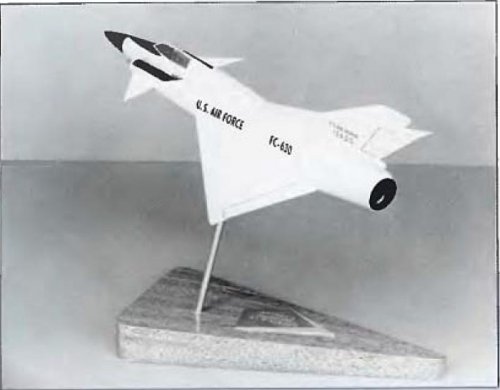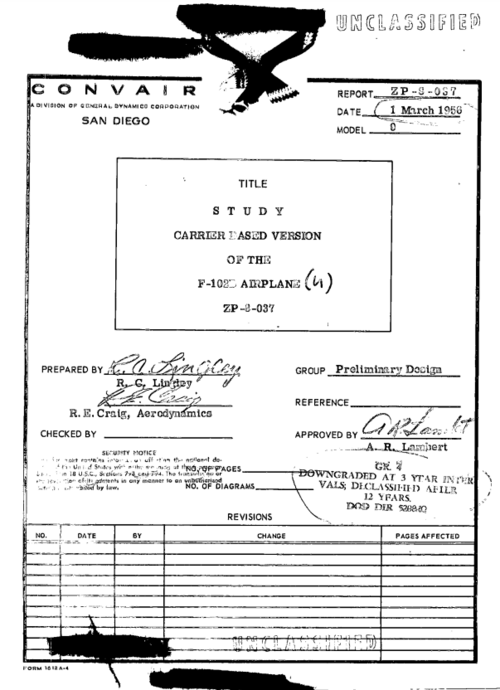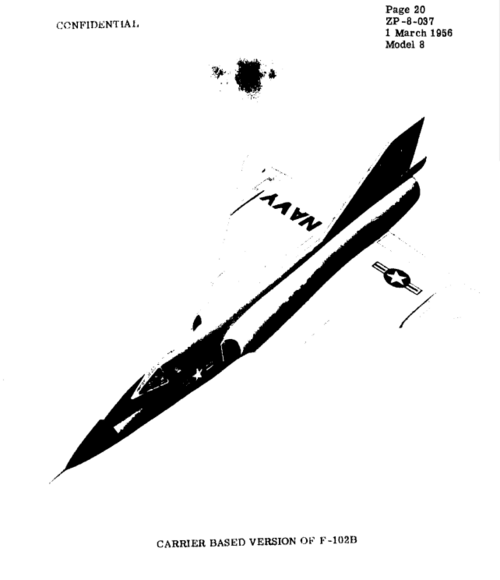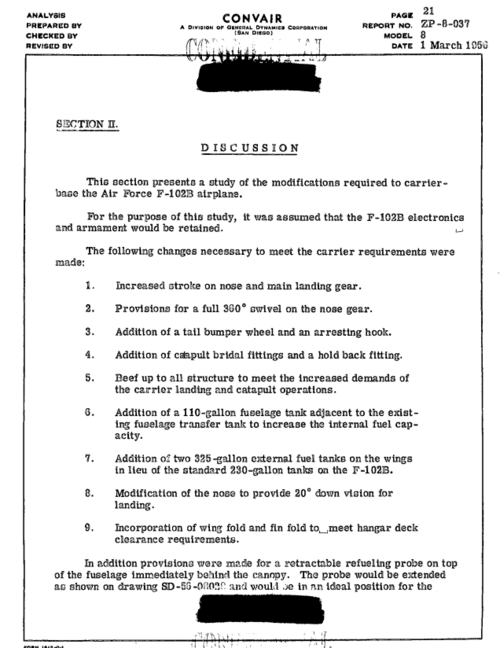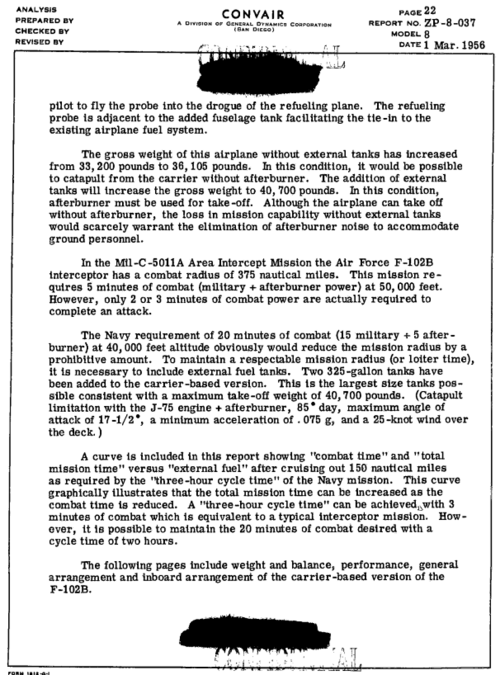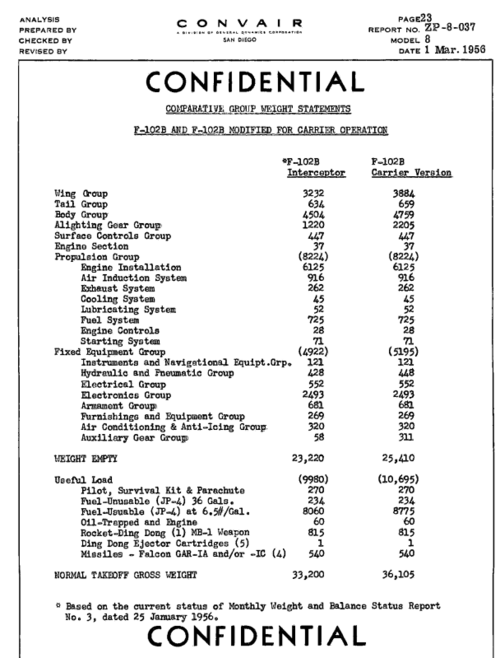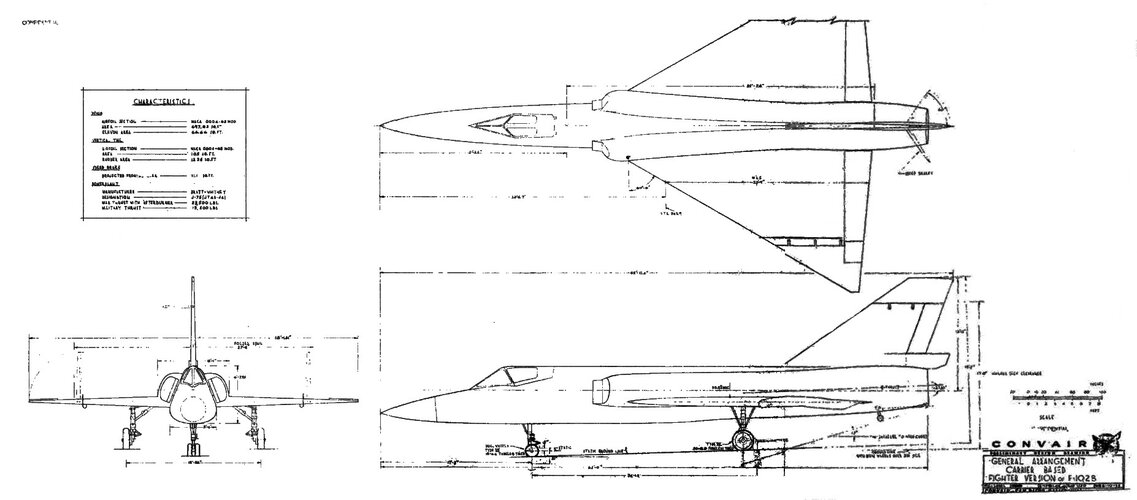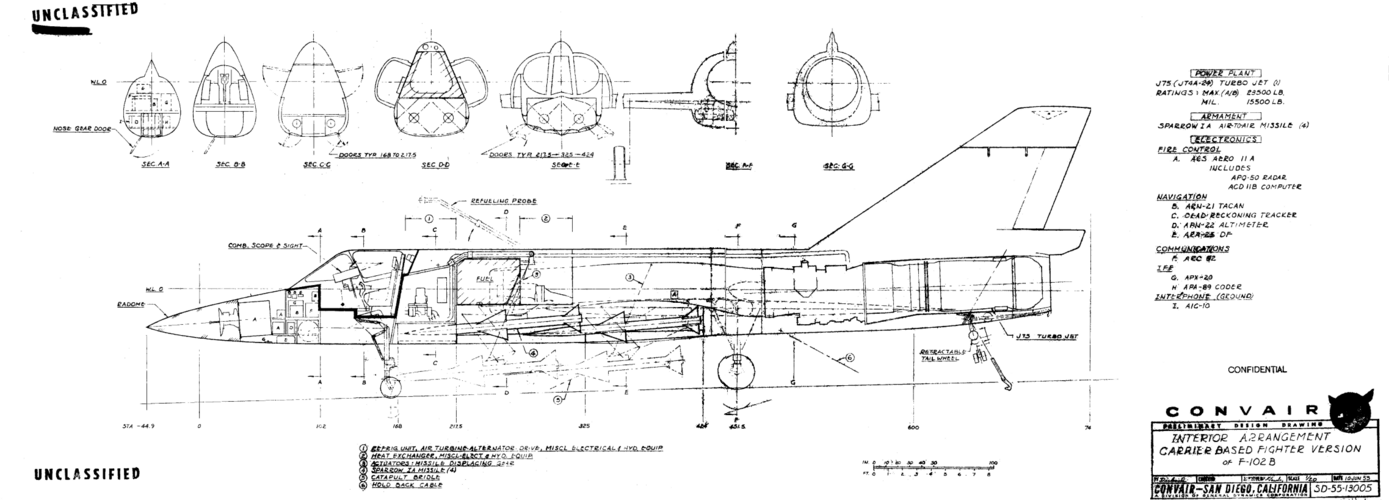Test Pilot Bob Rahn called the machine a "fighter pilot's dream", the best machine he had taken into the sky since flying the Spitfire. Its instability made it supremely agile for a skilled pilot, and Rahn claimed that he out-flew every Air Force chase plane sent up with him. Marine Major Marion Carl, one of the top test pilots of the era, flew the Skyray and claimed: "If we had this airplane now in Korea, I could just pop off the MiGs -- one, two, three."
.....
One pilot said the Ford's handling "bordered on the bizarre." In fact, there were some test pilots who despised the F4D, and felt it should have never been accepted into operational service. That appears to have been a minority opinion, but even the Ford's admirers admitted its instability made it a handful for a relatively inexperienced pilot. Skilled pilots who liked the machine also found it tiring to fly for long distances, since keeping it on the level was a continuous balancing act. Of course, modern digital fly-by-wire flight control systems would have tamed the Skyray, even exploited its instability to optimize maneuverability -- but such technology was all but unimaginable in the Ford's day.
Stability is regarded as a good feature for carrier landings, and getting a Skyray on deck could be tricky, one pilot saying that was where "the Ford really got your attention." The wing was big, resulting in low wing loading, meaning the aircraft tended to be overly responsive to air disturbances. It also tended to "skid out" when the landing gear was lowered, because one main gear would drop before the other. One pilot compared it to "standing on top of a pencil" -- not a particular worry for daylight landings in clear weather, but "not so good" for instrument landing conditions.
The F4D-1 had a high angle of attack (AOA) on its critical carrier approach; however, pilots claimed the forward view was excellent, and the high AOA wasn't such a problem. On the other side of the coin, one pilot who didn't like the thing noted that the tailfin would be masked out by the wing at high AOA, reducing the aircraft's controllability still further, with low speed flight amounting to "a series of wallowing, half-roll, half-sideslip maneuvers that made the bird look drunk." Another Skyray pilot commented on watching one of his colleagues make "seven unsuccessful passes at the deck. We thought we might have to shoot him down, but on the eighth attempt, he landed."

